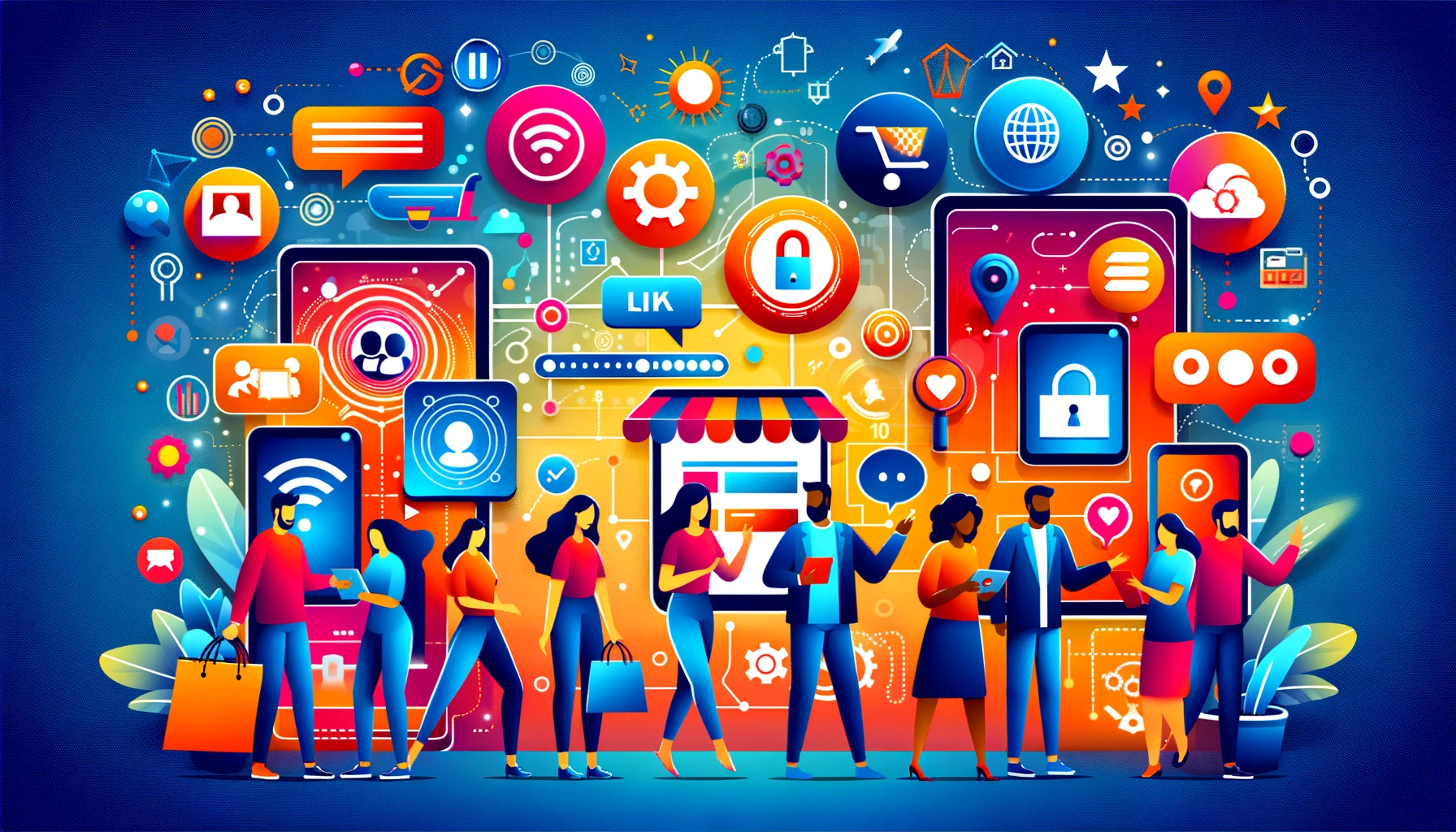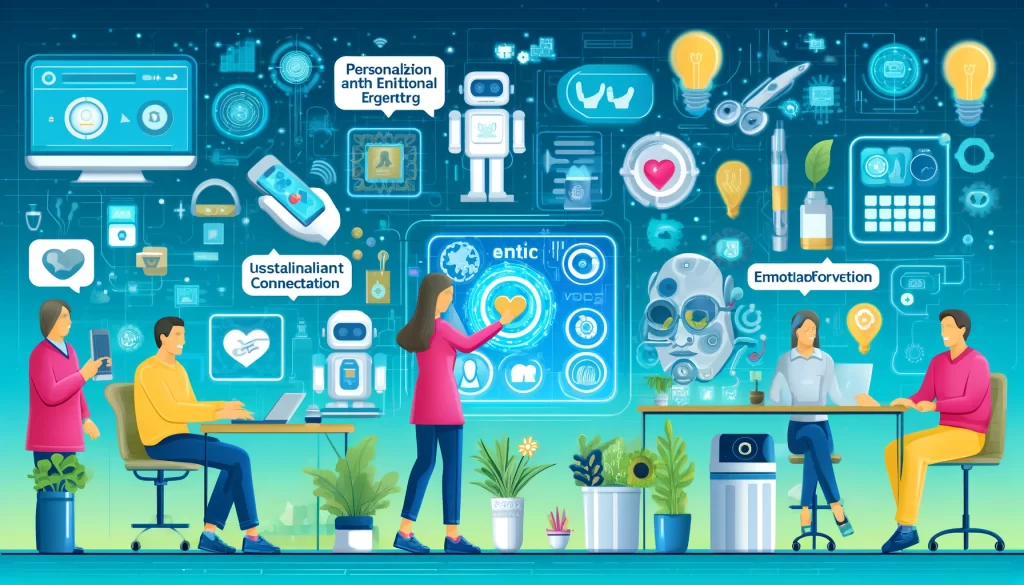
Enhancing Consumer Experience: Strategies, Trends, and Innovations
In today's fast-paced digital world, consumer experience (CX) has become a key differentiator for brands. With increasing competition and evolving customer expectations, delivering exceptional consumer experiences is no longer optional but a necessity for survival and growth. This comprehensive guide explores strategies, trends, and innovations in enhancing consumer experience, providing insights for businesses to create memorable and meaningful interactions with their customers.
Understanding Consumer Experience
Consumer experience encompasses every interaction a customer has with a brand, from the initial awareness to post-purchase support. It includes all touchpoints, both online and offline, and plays a crucial role in shaping customer perceptions and loyalty. A positive consumer experience can lead to increased customer satisfaction, loyalty, and advocacy, while a negative experience can drive customers away and harm a brand's reputation.
Key Components of Consumer Experience
- Customer Journey Mapping: Understanding the customer journey is the first step in enhancing consumer experience. This involves mapping out all the touchpoints a customer interacts with, identifying pain points, and opportunities for improvement. By visualizing the entire customer journey, businesses can create a seamless and consistent experience across all channels.
- Personalization: Today's consumers expect personalized experiences that cater to their individual needs and preferences. Personalization involves leveraging customer data to deliver relevant and targeted content, offers, and recommendations. By understanding customer behavior and preferences, businesses can create personalized experiences that resonate with their audience.
- Omnichannel Experience: Consumers interact with brands through multiple channels, including websites, social media, mobile apps, and physical stores. An omnichannel approach ensures a consistent and integrated experience across all channels. This means providing a unified brand experience, regardless of the platform or device the customer uses.
- Customer Service: Exceptional customer service is a cornerstone of a positive consumer experience. This includes providing timely and efficient support, resolving issues promptly, and going above and beyond to meet customer needs. Investing in customer service training and technology can significantly enhance the overall experience.
- User Experience (UX) Design: The design and usability of a brand's digital platforms play a critical role in consumer experience. A user-friendly website or app with intuitive navigation, fast load times, and visually appealing design can enhance the overall experience. UX design should prioritize ease of use and accessibility to ensure a positive experience for all users.
Strategies for Enhancing Consumer Experience
- Customer Feedback and Insights: Collecting and analyzing customer feedback is essential for understanding their needs and expectations. Surveys, reviews, and social media listening can provide valuable insights into customer sentiments and areas for improvement. By acting on customer feedback, businesses can make informed decisions to enhance the consumer experience.
- Employee Engagement: Employees play a vital role in delivering exceptional consumer experiences. Engaged and motivated employees are more likely to go the extra mile to satisfy customers. Investing in employee training, recognition, and creating a positive work environment can boost employee morale and, in turn, enhance the consumer experience.
- Technology and Automation: Leveraging technology and automation can streamline processes and improve efficiency, leading to a better consumer experience. Chatbots, AI-powered customer support, and CRM systems can enhance interactions and provide quick resolutions to customer queries. Additionally, data analytics can help businesses understand customer behavior and personalize experiences.
- Proactive Customer Service: Anticipating customer needs and addressing potential issues before they arise can create a proactive customer service approach. This involves monitoring customer interactions and identifying patterns that may indicate potential problems. Proactive customer service can prevent negative experiences and build trust with customers.
- Loyalty Programs: Loyalty programs can incentivize repeat purchases and foster customer loyalty. Offering rewards, discounts, and exclusive benefits can encourage customers to continue engaging with the brand. A well-designed loyalty program can also provide valuable data on customer preferences and behavior, enabling further personalization.
Emerging Trends in Consumer Experience
- Artificial Intelligence (AI) and Machine Learning: AI and machine learning are transforming consumer experience by enabling more personalized and efficient interactions. AI-powered chatbots and virtual assistants can provide instant support, while machine learning algorithms can analyze customer data to deliver tailored recommendations and offers.
- Voice Technology: Voice-activated devices and assistants like Amazon Alexa and Google Assistant are becoming increasingly popular. Voice technology offers a convenient and hands-free way for customers to interact with brands. Integrating voice technology into the consumer experience can enhance accessibility and provide a seamless user experience.
- Augmented Reality (AR) and Virtual Reality (VR): AR and VR technologies are creating immersive and interactive experiences for customers. AR can enhance online shopping by allowing customers to visualize products in their real environment, while VR can provide virtual tours and experiences. These technologies can create memorable and engaging consumer experiences.
- Sustainability and Ethical Practices: Consumers are increasingly prioritizing sustainability and ethical practices in their purchasing decisions. Brands that demonstrate a commitment to environmental and social responsibility can enhance consumer experience by aligning with customers' values. Transparent and ethical practices can build trust and loyalty among consumers.
- Hyper-Personalization: While personalization has been a trend for some time, hyper-personalization takes it a step further by using real-time data and advanced analytics to deliver highly targeted and relevant experiences. This involves leveraging data from multiple sources to create a comprehensive view of the customer and tailor interactions to their specific needs and preferences.
Case Studies: Brands Excelling in Consumer Experience
- Apple: Apple is renowned for its exceptional consumer experience, from its sleek and user-friendly products to its seamless ecosystem and top-notch customer service. The company's retail stores provide a personalized and immersive shopping experience, with knowledgeable staff and hands-on product demonstrations. Apple’s commitment to design, innovation, and customer satisfaction has built a loyal customer base and a strong brand reputation.
- Amazon: Amazon has set the standard for online shopping experiences with its user-friendly website, personalized recommendations, and fast delivery options. The company's focus on convenience and customer satisfaction is evident in its Prime membership program, which offers benefits like free shipping, exclusive deals, and access to streaming services. Amazon’s customer-centric approach and continuous innovation have made it a leader in e-commerce.
- Starbucks: Starbucks excels in creating a personalized and consistent consumer experience across its global locations. The Starbucks Rewards program offers personalized offers and incentives, while the mobile app allows for convenient ordering and payment. The company’s emphasis on customer service, quality products, and community engagement has made it a beloved brand worldwide.
- Zappos: Zappos is known for its exceptional customer service and commitment to customer satisfaction. The company offers free shipping and returns, a 365-day return policy, and 24/7 customer support. Zappos’ customer-centric culture and dedication to going above and beyond for its customers have set it apart in the online retail space.
Challenges in Enhancing Consumer Experience
- Data Privacy and Security: As businesses collect more customer data to personalize experiences, ensuring data privacy and security becomes a critical challenge. Companies must comply with data protection regulations and implement robust security measures to protect customer information. Building trust with customers through transparent data practices is essential for a positive consumer experience.
- Consistency Across Channels: Delivering a consistent experience across multiple channels can be challenging, especially for businesses with a diverse range of touchpoints. Ensuring that messaging, branding, and customer service are aligned across all channels requires coordination and a unified strategy. Inconsistent experiences can lead to customer frustration and dissatisfaction.
- Meeting Evolving Customer Expectations: Customer expectations are constantly evolving, driven by technological advancements and changing market trends. Keeping up with these expectations requires businesses to stay agile and continuously innovate. Failing to meet customer expectations can result in a negative experience and loss of customer loyalty.
- Resource Constraints: Enhancing consumer experience often requires significant investments in technology, training, and infrastructure. For smaller businesses with limited resources, implementing comprehensive CX strategies can be challenging. Prioritizing initiatives and focusing on high-impact areas can help overcome resource constraints.
Future of Consumer Experience

The future of consumer experience will be shaped by advancements in technology, changing customer expectations, and the growing importance of sustainability and ethical practices. Businesses that can adapt to these trends and continuously innovate will be well-positioned to create exceptional consumer experiences.
- Integration of AI and Human Touch: While AI and automation will play a significant role in enhancing consumer experience, the human touch will remain crucial. Balancing technology with personalized human interactions can create a more holistic and satisfying experience for customers.
- Seamless Digital and Physical Integration: The line between digital and physical experiences will continue to blur, with businesses integrating both to create a seamless and cohesive experience. Technologies like AR, VR, and IoT will facilitate this integration, allowing customers to interact with brands in innovative and immersive ways.
- Focus on Emotional Connection: Building emotional connections with customers will become increasingly important. Brands that can evoke positive emotions and create meaningful experiences will stand out in a competitive market. This involves understanding customer emotions and designing experiences that resonate on an emotional level.
- Sustainability as a Core Value: As consumers become more environmentally conscious, sustainability will play a central role in consumer experience. Brands that prioritize sustainable practices and communicate their efforts transparently will attract and retain eco-conscious customers.
Conclusion
Enhancing consumer experience is a multifaceted and ongoing process that requires a deep understanding of customer needs, a commitment to innovation, and a focus on delivering consistent and personalized interactions. By leveraging technology, collecting and acting on customer feedback, and fostering a customer-centric culture, businesses can create memorable experiences that drive customer satisfaction, loyalty, and advocacy.
As the landscape of consumer experience continues to evolve, staying ahead of trends and continuously adapting to changing customer expectations will be key to success. Brands that prioritize consumer experience and invest in creating meaningful and engaging interactions will not only thrive in the competitive market but also build lasting relationships with their customers.
By adopting a holistic approach to consumer experience, businesses can differentiate themselves, foster customer loyalty, and drive long-term success. The journey to enhancing consumer experience is ongoing, but with the right strategies and a commitment to excellence, businesses can create experiences that delight and inspire their customers.
